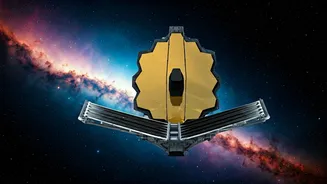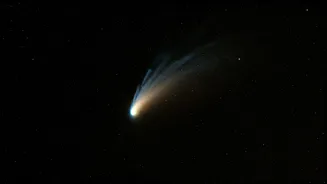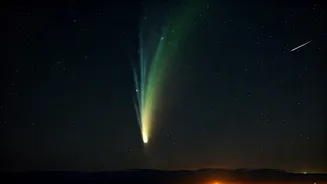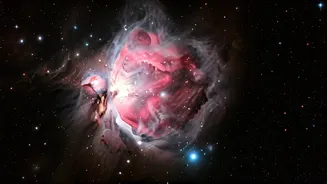Mauve: Stellar Insights
The 'Mauve' space telescope, about the size of a small suitcase, represents a significant leap forward in understanding stellar behavior. Its primary mission
involves analyzing stars emitting significant energy, allowing researchers to study their impacts on surrounding planets. Marcell Tessenyi, founder and CEO of Blue Skies Space, explained that 'Mauve' would help determine which stars could potentially harm life-supporting environments and identify those that are more conducive to life. This telescope offers the potential to observe stars that could damage a life environment and those that would not.
Exoplanet Revolution Ahead
The search for exoplanets, which began three decades ago with the discovery of the first alien world around a sun-like star, continues to evolve rapidly. The James Webb Space Telescope (JWST) is actively gathering data that could help determine whether TRAPPIST-1e, a nearby exoplanet, could potentially support life. Moreover, scientists are using exoplanets to map out 'polka dots' on stars, furthering our understanding of stellar activity. The JWST has also provided the first weather report of a nearby world without a sun, revealing stormy conditions and auroras. Looking ahead, the next 30 years promise even more groundbreaking discoveries as the search for exoplanets continues, with over 6,000 already identified.
Celestial Events Unfold
Numerous celestial events also capture the imagination. The Orionid meteor shower, for instance, is anticipated to peak under dark, moonless skies. Comet Lemmon's ghostly tail has been observed in the skies above England, while Comet C/2025 R2 (SWAN) is also expected to shine brightly in the October sky. These events provide opportunities for observation and contribute to our understanding of the solar system's dynamics. The moon plays a role in the 'CosmoCube' moon orbiter mission, which aims to eavesdrop on whispers from the early universe.
Innovative Telescopes, New Frontiers
The exploration of space is supported by technological innovations, like the potential of a unique rectangular telescope to find Earth 2.0. The 'CosmoCube' moon orbiter is designed to listen to the earliest universe signals. Furthermore, the European PLATO exoplanet hunter mission's launch is eagerly anticipated, with a video available to illustrate its operational capabilities. The collaboration between SpaceX and astronomers also strives to safeguard radio astronomy from interference caused by satellite activity. These advanced instruments and collaborative efforts are fundamental to discovering and investigating the cosmos.
Space Missions and Discoveries
Several ongoing and upcoming space missions offer exciting opportunities for research. A private spacecraft will give NASA's Swift space telescope an orbital boost in 2026. Moreover, Vast is gearing up to launch its Haven-1 private space station in 2026. A spacecraft equipped with a solar sail is being developed to offer earlier warnings of space weather threats to Earth's technologies. The potential investigation of interstellar invader comet 3I/ATLAS by spacecraft represents a rare, once-in-a-lifetime opportunity for researchers. The recent discoveries include finding an exoplanet without a sun that is gobbling up 6 billion tons of gas and dust per second. Additionally, scientists are studying strange 'puffy' alien worlds that challenge the current understanding of how planets behave.











